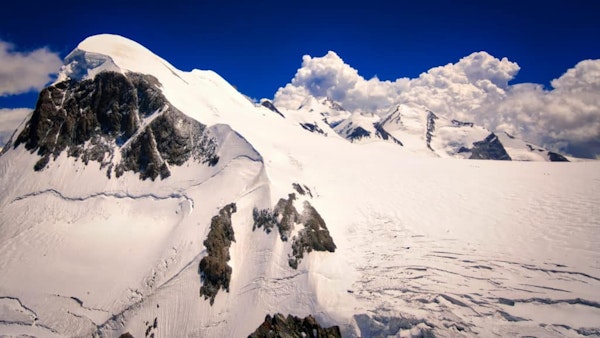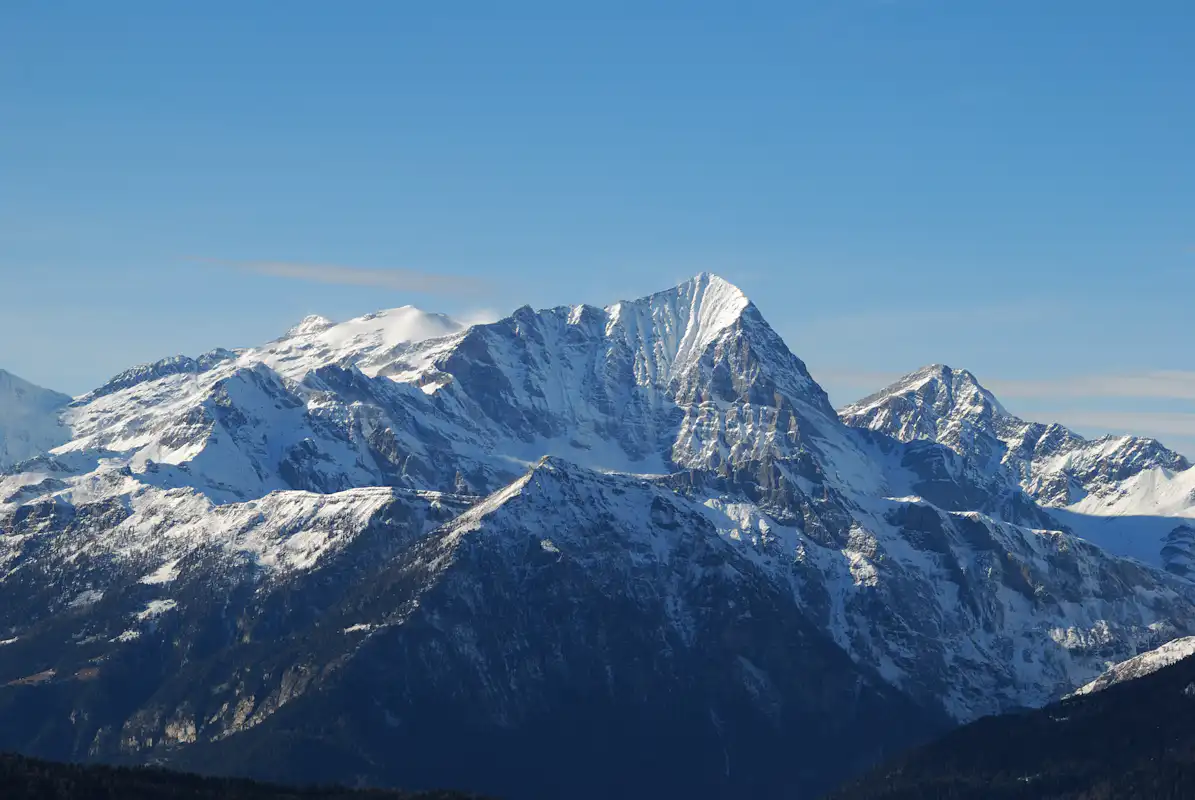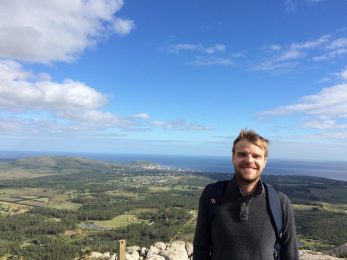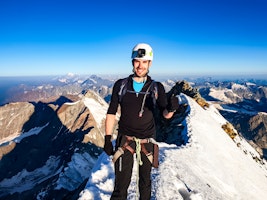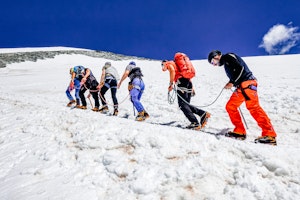Rising 4.164 meters above sea level (masl), the Breithorn is widely regarded as the easiest and most popular of Switzerland’s 4.000 meter peaks to climb.
Located on the Swiss-Italian border in the Pennine Alps, this mountain is quite popular both as a training climb for the Matterhorn as well as an easy climb for beginners. One of the reasons for this popularity are the many gorgeous views. From the summit as well as the approach, there are spectacular views of the Matterhorn, Rhone Valley and Monte Rosa massifs, among many others.
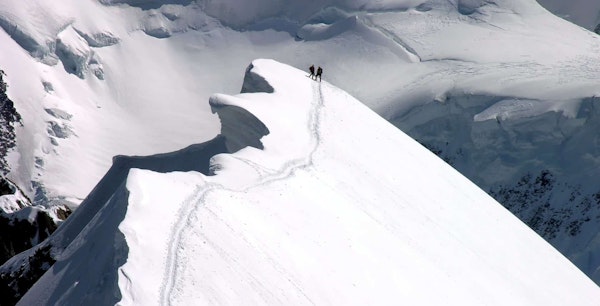
The peak is divided into four summits, which are known as the Central Breithorn, the Western Breithorn, the Gendarm and the Roccia Nera. The Western Breithorn is the tallest of these summits and the one that is most commonly climbed. (For all intents and purposes, this is the one we refer to when we write Breithorn throughout this post.)
The Breithorn was first climbed in 1813 by a French expedition led by the climber Henry Maynard and including the famous automobile pioneer, Jean Gras. Since then it has attracted countless mountaineers and outdoor enthusiasts to its slopes.
Here are the most important things you need to know before planning your own expedition to the top!
Breithorn starting point and climbing routes
There are two sides from which to climb the Breithorn: the Italian side at Cervinia and the Swiss side at Zermatt. Both sides take you a fair way up the mountain and leave you with the option of climbing three different routes once you have left the lift. Whichever side from which you wish to start really comes down to the preference of where you want to stay.
From Cervinia, you take a ski lift to the Plateau Rosa, which is located at 3.480 masl. Meanwhile from Zermatt, you generally meet your guide at the Matterhorn Express and take it until the Klein Matterhorn Cable car. This delivers you to the Breithorn Plateau, which is located at 3.800 masl.
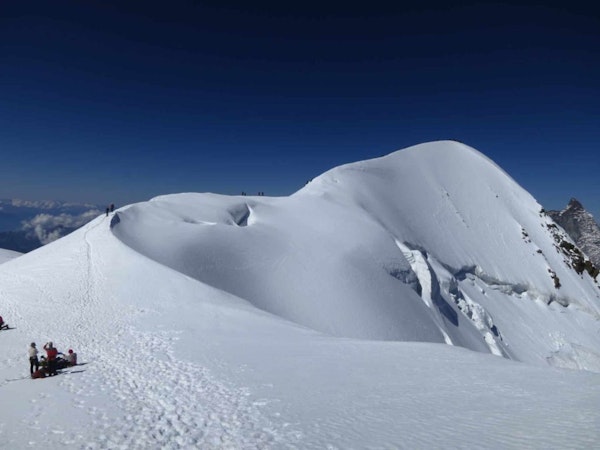
From both of these plateaus, you then have two options to reach the summit. There is also a third option, but it requires spending a night at a hut at the foot of the mountain and is best climbed from June to September.
The easiest of these three routes is the SSW face, which is known as the normal route. This route has very little technical difficulty involved and mainly requires you to hike across the glacier and use basic crampon techniques. There is one tough bit toward the end where you encounter some cornices.
The Half Traverse is the other day-trip route. It is rated at AD- III and involves climbing over glaciers and along steep mountain ridges. Several fatalities occur along this route each year, so it is not to be taken lightly.
The Triftjigrat is the overnight route. It is the toughest of the three and should only be undertaken by advanced mountaineers. Rated at D-, you will need to camp on one of the plateaus and wake up at around 2 am in order to get up and back down in time. This route involves climbing up steep, multi-pitch glacier faces. You generally take the easy way back down, however.
If you need accommodation in Zermatt, here are some places recommended by local guide Guy Robert May:
How long is the Breithorn ascent?
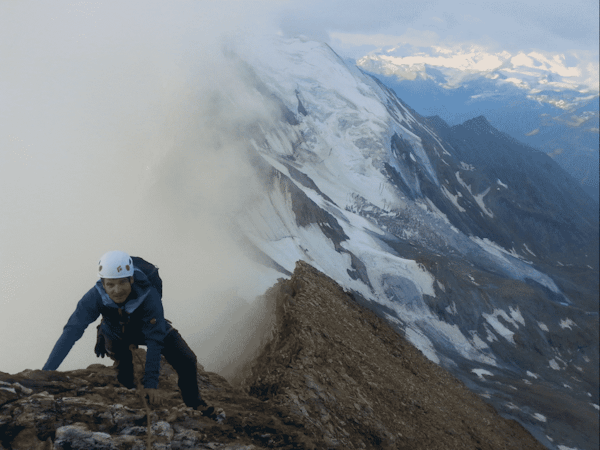
For most people, climbing the Breithorn takes about one day. Depending on your skill level and fitness, you may be able to meet your guide at 6:30 am, reach the summit by 12:30 pm and be well on your way back down by 2:00 pm.
Mountain huts in Breithorn
If you are only climbing the Breithorn, then there is no need to stay in a mountain hut – or refuge as they are known locally – because the ascent only takes one day.
However, for the two day ascent you will spend a night in the Gandegg hut. It is relatively cozy and well-looked after, including food and beverages as well as hot water. During the summer, a half-board meal and overnight stay cost about CHF 84 per person.
Physical requirements and technical difficulties
The Breithorn is not a very technically challenging climb and may be done with minimal previous mountaineering experience. Each of the three routes to the top, requires a different level of technical skill. However, a high level of fitness is required for the climb as you will be dealing with high altitude and a fairly steep, but consistent ascent.
When to climb Breithorn?
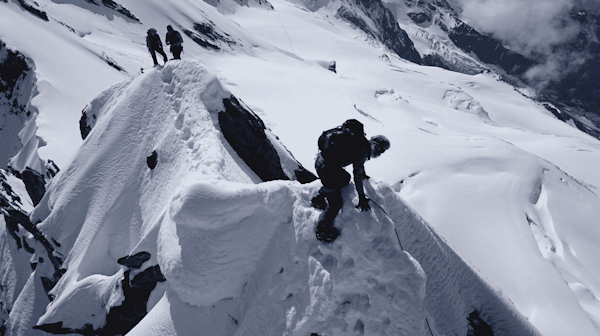
The best time of year to climb Breithorn is from May to October, with the peak time being July and August. These are the warmest months. However, the temperatures at and toward the summit never surpass 0ºC and may be as cold as -13ºC.
Summers in this part of Switzerland tend to be warm and humid with intermittent rainfall, but also plenty of clear days. For this reason, it is best to schedule your trip with a few extra days either side in case of a rain delay. Autumn is generally the driest season.
What equipment do I need?
Consult your guide about what equipment he or she provides for the trip before booking. Otherwise the following are what certified mountain guides generally recommend that you bring along:
Backpack (preferably 30 liters)
Breathable t-shirt and long sleeve shirt
Camera and extra batteries
Camping equipment (if applicable)
Collapsible trekking poles
Crampons
Harness
High-energy snacks
Hiking socks (at least 2 pairs)
Ice axe
Liner gloves and heavier shell gloves
Personal first aid kit
Sunglasses and sunscreen
Walking shoes and mountaineering boots that fit into crampons
Water bottle (preferably at least 1 liter)
Water-proof shell jacket and down jacket
Water-proof shell trousers and climbing pants
Wool cap and sun hat
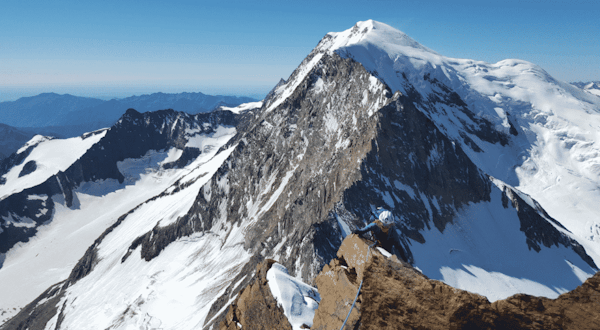
Estimated price
Climbing only the Breithorn in one day usually costs a single person about €300, but some guides do charge more. For the toughest of the three routes, prices rise to about €500 per person. These prices usually include only the guiding fee and group equipment. Other expenses, such as train tickets, food and lodging, are not included in this price.
Many people elect to climb the Breithorn either as a warm up for the Matterhorn or as part of a longer climbing expedition. These trips usually cost anywhere between €1.000 and €5.000 per person and vary depending on the number of days, which peaks you elect to climb and what is included in the guide’s price.
What else can I do in Switezerland?
Switzerland is a playground for outdoor sports enthusiasts. Whatever the season, there is no shortage of activities.
After completing the Breithorn climb, many mountaineers go on to summit the Matterhorn. However, there are dozens of other mountaineering and hiking expeditions to enjoy during the summer months as well.
More of a skier? Not to worry, the venerated Swiss Haute Route is the quintessential Swiss ski touring destination for enthusiasts worldwide.
